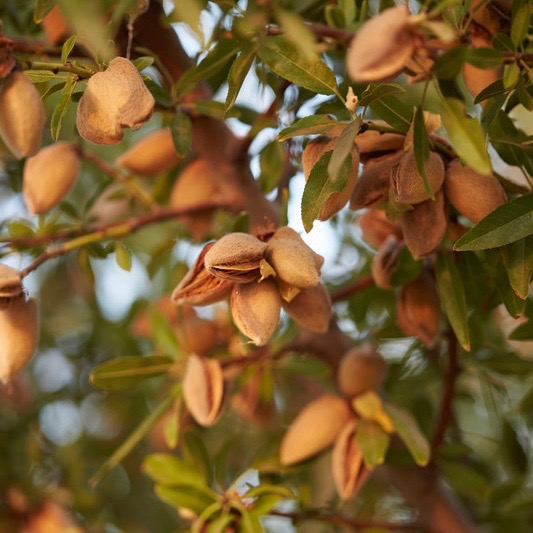Today, USDA’s National Agricultural Statistics Service reported that California’s almond acreage increased in 2017. Bearing acres, that is orchards old enough to produce a crop, were reported at 1 million acres, which is up 6 percent from 2016. Total almond acres for 2017 were estimated at 1.33 million acres, up 7 percent from the previous year.1
As you may have guessed, this growth will help meet the ever-increasing global demand for heart-healthy, nutrient-dense almonds,2 but did you know that beyond growing the nut that we love to eat, the California almond community provides important benefits to the surrounding communities and environment?
Creating a Genuine Bioeconomy through Coproduct Utilization
Current Almond Board-funded research is reviewing a range of potential applications for almond coproducts – hulls, shells, and woody biomass – including creating materials that can be incorporated into cosmetics, food, fuel, and plastics. Not only does this help California in its work to create a genuine bioeconomy – where every byproduct is an input to another valuable product – it can also create economic benefits through higher value uses of almond coproducts and the creation of new rural jobs.
Learn more about this research from our recent blog post.
Supporting Sustainable Groundwater Resources for California
Groundwater is a vital resource in California, and one of the ways it can be replenished is through managed on-farm groundwater recharge. To understand and investigate how California’s one million acres of almond orchards can be part of this sustainable solution, ABC has partnered with researchers from UC Davis, Sustainable Conservation, Land IQ, and Lawrence Berkeley National Laboratory, and almond farmers.
Learn more about latest developments in this research from our blog post.
Growing Trees that Clean the Air
California’s 130 million almond trees3 absorb and store significant amounts of carbon dioxide, a potent greenhouse gas, throughout their lifespan, and the utilization of almond coproducts is key to reducing carbon emissions and the industry’s environmental impact.4 Should production advances and policy changes work hand in hand, the California almond community could become carbon neutral or even carbon negative. At present, 50 percent of the industry’s carbon emissions are offset by the trees’ inherent carbon storage and current farming practices.5
For more on the benefits of almond trees, see this blog post.
Get additional details about the 2017 Almond Acreage Report through our news release or view the full report here.
1USDA-NASS. 2017 California Almond Acreage Report. April 2018.
2Scientific evidence suggests, but does not prove, that eating 1.5 ounces per day of most nuts, such as almonds, as part of a diet low in saturated fat and cholesterol may reduce the risk of heart disease. One serving of almonds (28g) has 13 grams of unsaturated fat and only 1 gram of saturated fat.
3USDA-NASS. 2015 California Almond Acreage Report. Apr. 2016. USDA-NASS. 2016 California Almond Objective Measurement Report. Jul. 2016
4Kendall, A., et al. Life Cycle–based Assessment of Energy Use and Greenhouse Gas Emissions in Almond Production, Part I: Analytical Framework and Baseline Results. Journal of Industrial Ecology, 19: 1008–1018.
5Marvinney, E., et al. Life Cycle-based Assessment of Energy Use and Greenhouse Gas Emissions in Almond Production, Part II: Uncertainty Analysis Through Sensitivity Analysis and Scenario Testing. Journal of Industrial Ecology, 2015, 10.1111/jiec.12333.


